Ansoff Matrix allows you to plan your company’s growth
Looking to plan your company’s growth and don’t know which way to go? Use the Ansoff Matrix to opt for the right growth strategy for your business!
- What is the Ansoff Matrix useful?
- What are Ansoff Matrix’s 4 growth strategies?
- Who created the Ansoff Matrix?
- Why is the Ansoff Matrix useful?
What is the Ansoff Matrix?
The Ansoff Matrix is a strategic planning tool that provides a framework to help executives and managers devise strategies for future growth.
What are Ansoff Matrix’s 4 growth strategies?
The Ansoff Matrix also called the Product/Market Expansion Grid, is a method for measuring the profit potential of alternative product-market strategies.
Here are the 4 growth strategies: market penetration, market development, product development, diversification.
The Ansoff Matrix – Market penetration
Market penetration is an effort to increase company sales without departing from an original
product-market strategy.
The company seeks to improve business performance either by increasing the volume of sales to its present customers or by finding new customers for present products.
This growth strategy presents the least risk to a company because it focuses on existing products in existing markets.
The Ansoff Matrix – Market development
Market development is a strategy in which the company attempts to adapt its present product line (generally with some modification in the product characteristics) to new missions.
The market development growth strategy is somewhat less risky since it refers to existing products in new markets.
The Ansoff Matrix – Product development
A product development strategy, on the other hand, retains the present mission and develops
products that have new and different characteristics. These products will improve the performance of the mission.
This growth strategy is not as risky as diversification because it is easier to develop new products in a market the company already has.
The Ansoff Matrix – Diversification
Diversification is the fourth growth strategy and the riskiest. It calls for a simultaneous departure from the present product line and the present market structure.
Developing new products in new markets requires extensive research conducted by the company: market research, customer research, buying behaviour analysis, external influences on the market, business environment analysis etc.
A healthy company can take any of the above growth strategy paths to survive and thrive.
Or it can choose to pursue three of them simultaneously: market penetration, market development and product development.
Diversification is the most difficult growth strategy a company can implement.
While the other three require the same technical, financial and operational resources used for the original product line, diversification requires a distinct break with past business practices.
New skills, new technologies, new resources are needed in order to diversify. Diversification basically means starting a new business which entails organizational changes and other unforeseen challenges that management needs to address.
Two types of diversification
There are two types of diversification: related diversification and unrelated diversification.
In related diversification, the company develops a new line of products but remains in the same industry.
Toyota Company is a car manufacturer and a humanoid robots developer. The company has the knowledge and the resources in place (automated assembly lines) to develop both lines of products.
In unrelated diversification, the company develops products that are outside its original industry.
A good example is Tesla, the leading electric car manufacturer, which moved into spirits with the launch of Tesla Tequila, an exclusive, premium beverage.
Who created the Ansoff Matrix?
The tool was developed by Igor Ansoff known as the father of Strategic management.
Igor Ansoff was an applied mathematician and business manager who worked at Lockheed Aircraft Corporation where he became Vice President of Planning and Director of Diversification.
Following his tenure at Lockheed, Igor went into academia and was a Professor of Management at Owen Graduate School of Management.
In 1983 he joined the U.S. International University (USIU, now Alliant International University) where he created the school’s strategic management program.
He has consulted with hundreds of multinational corporations including, Philips, General Electric, and IBM.
To honour his body of work, the prestigious Igor Ansoff Award was established in 1981 in the Netherlands. The award is given for research and management in the study of Strategic Planning and Management.
Igor first described the matrix in Strategies for diversification, an article published in 1957 in the Harvard Business Review. The strategic planning tool was subsequently published by Igor in his book Corporate Strategy: An Analytic Approach to Business Policy for Growth and Expansion (1965).
Why is the Ansoff Matrix useful?
The Ansoff Matrix is a highly useful strategic tool that allows executives, business developers and managers to make the right decision for the company growth-wise.
Here are the benefits of using the Ansoff Matrix:
- It helps executives analyse the risk involved while moving in a particular direction;
- It provides managers with a clear map of possible strategies for growth;
- This tool provides different options that managers can go with according to two variables: products and market;
- It helps marketers determine marketing strategies, planning activities and opportunity costs.
Sources: Strategies of Diversification (1957), AnsoffMatrix.com
Join the Conversation
We’d love to hear what you have to say.
Get in touch with us on our LinkedIn Page, Facebook Page, Twitter or TikTok.
8 Key Factors Behind Netflix’s Success Story
This is the fourth article in our Growth Stories Series. Read our previous stories on business growth: Slack, Canva and Spotify.
Just as TV replaced the radio in the 1950s as the dominant home entertainment media, so too internet entertainment is slowly but surely replacing cable TV. And Netflix is leading the change.
This article is focused on identifying the key factors behind Netflix’s success story.

What is Netflix?
Netflix is a streaming service that allows its customers to watch a wide variety of video entertainment on thousands of Internet-connected devices. It is a direct-to-consumer subscription video service.
Netflix is not an entertainment company, it is a technology company, much like Amazon, Google or Facebook.
Netflix brief history, stats and latest news & achievements
- 1997 – Reed Hastings and Marc Randolph co-found Netflix to offer online movie rentals;
Reed Hastings is an active educational philanthropist, received an MSCS in Artificial Intelligence from Stanford University, is a current board member of Facebook and a former board member of Microsoft (2007-2012).
- 1998 – 2000 – The company launched the first DVD rental and sales site, netflix.com; debuted a subscription service, offering unlimited DVD rentals for one low monthly price; introduced a personalized movie recommendation system, which used Netflix members’ ratings to accurately predict choices for all members;
- 2005 – 4.2 million members;
- 2007 – Netflix introduced streaming, which allowed members to instantly watch television shows and movies on their personal computers;
- 2013 – Netflix launched its first slate of original programming (House of Cards, Orange is the New Black etc); the first internet TV network nominated for the Emmy Awards;
- 2014 – over 50 million members globally;
- 2016 – Netflix is available worldwide: 190 countries; Stranger Things premiere, which would go on to become an acclaimed and award-winning worldwide phenomenon;
- 2017 – 100 million members globally; Netflix wins its first Oscar for Best Documentary Short Subject (The White Helmets);
- 2018 – the most nominated service at 2018 Emmy Awards with 112 nominations (HBO received 108); both Netflix and HBO won 23 awards each
- Paid memberships – over 148 million in 190 countries;
- Revenue in Q1 2019 – over $4.5 billion (Netflix);
- Stock-market value – nearly $165 billion, more than Disney ($130 billion);
- Netflix has raised a total of $3.1 billion in funding over 10 rounds;
- May 2019: Netflix acquires StoryBots, a leading educational entertainment brand for kids which signals Netflix’s commitment to educational programming for preschoolers.
Netflix changed how and what we watch. They disrupted the cable TV industry through technological innovations like digital streaming and machine learning. They’ve been on the market for over twenty years and much like the butterfly, they keep transforming into a more beautiful version of themselves. And what it all comes down to is simple: catering to their customers’ needs and offering them an amazing experience.

8 key factors behind Netflix’s success story
1. Disrupting the industry – Disrupting itself
The first time Netflix innovated was when they were shipping DVDs via mail. Then they abolished late fees which lead to Blockbuster’s crush & burn demise. After that they transitioned from mailing content to streaming movies and TV shows digitally and finally, Netflix began producing its own original content.
2. Flexibility
Consumers can watch content on demand, on any screen, and the experience is personalized to individual tastes.
3. Unlimited options
Subscribers can find a wide range of movies, tv series, shows, performances, documentaries licensed from distribution partners with new options entering the offer on a regular basis. This makes Netflix’s offer practically unlimited. I’ve never heard anyone say they’ve seen everything on Netflix.
4. Investing in original content
According to Variety, Netflix is expected to spend $15 billion on content in 2019, and about 85% of new spending is on originals which means over $12 billion. It is more than any of its competitors (Amazon, Hulu or HBO Now) invest in original content and it puts Netflix in the top spot on customer-satisfaction surveys.
The more investment you’re putting in, the more people are finding content that they love and the more they have value in the service.
Reed Hastings, CEO Netflix
5. No ads
How many ads do you see on a daily basis? 50? 100? More? Some say the number of ads which we are exposed to is anywhere between 4000 to 10.000 ads each day. Ads are the reason ad-blocking software is more popular than ever with 236 million people using desktop ad-blocking plugin in 2016.
Netflix knows people wish to enjoy watching movies with no interruptions like annoying and sometimes irrelevant ads which is why they provide an ad-free experience to its user base.

source: lifethroughtsg.co.uk
6. Netflix pioneered binge-watching
We are pleasure-seeking animals and sometimes we go a little too far. When we drink or eat in excess it’s called bingeing.
Netflix’s superior user experience has determined binge to take on a new meaning which refers to watching multiple episodes of a television programme in rapid succession and getting little to no sleep.
Binge-watching started in 2016 when Netflix decided to put a show’s entire season online at once. It was another way to disrupt the industry – people were no longer watching the shows when the networks dictated, they were free to watch them all in one sitting and whenever they wanted.
All TV will move to the internet, and linear TV will cease to be relevant over the next 20 years, like fixed-line telephones.
Reed Hastings, CEO Netflix
7. Excellent user experience
Here are some of the excellent user experience that Netflix provides:
- Custom-created preview videos that automatically play when you scroll over a title card;
- A download-and-go feature that allows users to watch shows offline;
- The ability to share your Netflix account;
- 30-day free subscription.
8. Personalization via the Netflix recommendation engine
Netflix knows everything we do on their platform. What movies we watch, when we hit play or pause, how many episodes of a TV show we watch daily and so on. They have a huge amount of data on all 148 million paying subscribers. It’s impossible for a human analyst to mine through all this data – big data – and extract useful insights.
That’s where machine learning, a subset of artificial intelligence comes in. Netflix uses machine learning to help their algorithms “learn” without human assistance. Machine learning gives the platform the ability to automate millions of decisions based off of user activities.
Without recommendations, users would spend a lot of time going through thousands of movies and tv shows. That’s why the Netflix recommendation engine is vital to the platform’s success because it automates the search process for users who would otherwise run out of patience and leave the platform.

source: medium.com
Conclusion
Netflix is successful because it keeps its subscribers’ needs at heart. Its co-founders were courageous enough to steer the ship in a different direction than the industry and teach their teams to live by the business strategy of Adapt and adopt. The company’s transformations are supported by technology innovations.
Where will Netflix go next?
Let’s stick around and find out!
Join the Conversation
We’d love to hear what you have to say.
Get in touch with us on our LinkedIn Group, Facebook Group or Twitter.
How Slack Grew To 8 Million Subscribers In 5 Years
As of 2018, Slack has grown to 8 million subscribers in just five years.
Despite its huge success, this collaboration tool for teams has humble beginnings. In fact, it was a by-product called Tiny Speck that Stewart Butterfield’s team had built when they were working to develop an online game. The game didn’t fly; Slack is the Phoenix that rose from its ashes.

Slack’s 2019 rebranded logo
This article gives you insight into how Slack managed to become an 8 million subscriber app in such a short timeframe.
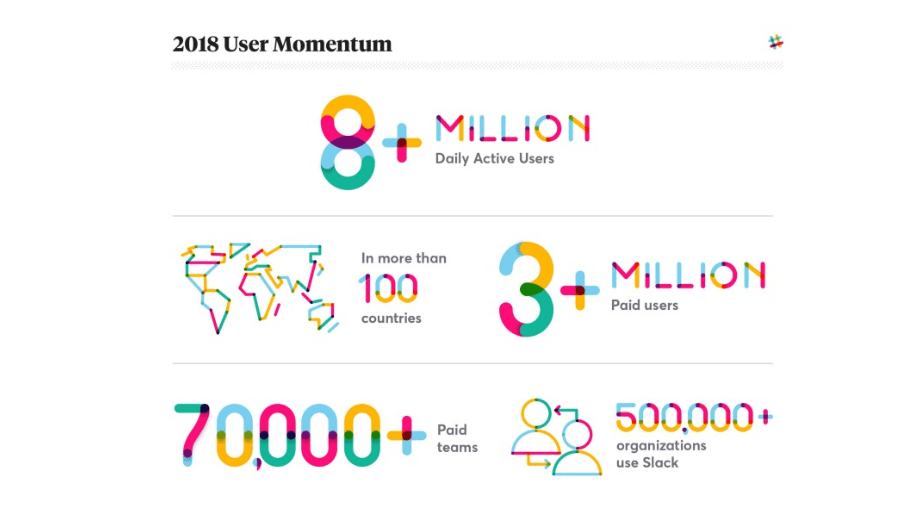
slackhq.com
Slack is an enterprise messaging tool which is aimed at assisting team members to chat, work on projects together, and share links and more in real time.
Read our previous Growth Stories: Spotify, Canva.
Slack was developed using the following 6 growth strategies:
1. Word-of-mouth marketing
Stewart Butterfield (CEO and co-founder) and his team began working on Slack in 2012.
Before their preview release in August 2013, Stewart and his team had begun asking friends and acquaintances working at other companies to give Slack a go and see what they make of it.
This helped the team discover how the product fitted the market and catered to customers’ needs. It also helped them work on core features and basic functionality.
The word-of-mouth approach worked brilliantly because on the release day 8,000 people signed-up to Slack. Two weeks later, that number had grown to 15,000. By February 2015, when the tool was publicly available, Slack had acquired 500,000 daily active users. Within four months, this number had doubled to 1.1 million active users.
Today Slack has 8 million daily active users with 3 million paid users and counting. If you are an SEO enthusiast, here is another benefit which will make you feel warm inside: 100.000.000 organic traffic/month of which 90% is driven by word-of-mouth.
Our mission at Slack is simple: to make people’s working lives simpler, more pleasant, and more productive. The experience our users have working in Slack is core to our culture and to our business success.
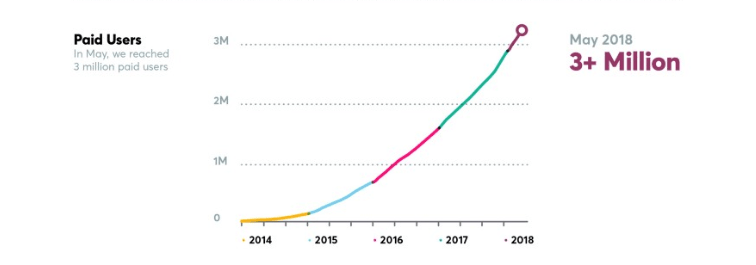
slackhq.com
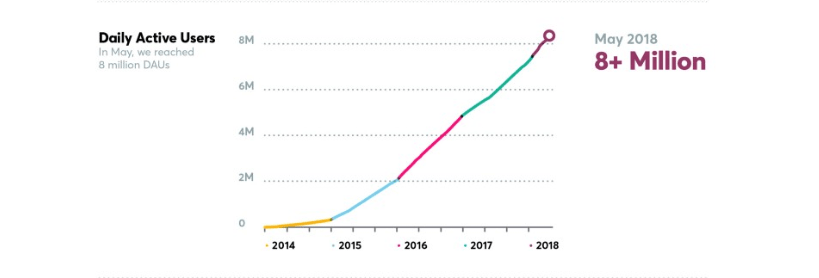
slackhq.com
2. Integration with other providers
We’re selling a reduction in information overload, relief from stress, and a new ability to extract the enormous value of hitherto useless corporate archives. We’re selling better organizations, better teams. That’s a good thing for people to buy and it is a much better thing for us to sell in the long run. We will be successful to the extent that we create better teams.
Stewart Butterfield, CEO and founder
Slack is not just a messaging app, it’s a collaboration hub that brings the right people together with the right conversations, information, and tools they use at work. And to be productive and efficient, teams need to make the most of their time. So integrating with other tools that teams use on a regular basis was paramount to Slack’s success.
There are more than 1500 apps in the Slack App Directory. Slack’s website attracts 100.000.000 visitors/month.
Chris von Wilpert has analyzed how the integrations are contributing to Slack’s website organic traffic. Here are his conclusions:
- Slack ranks on the first-page search results whenever anyone searches a product with which Slack integrates;
- Slack managed to achieve this by creating an individual landing page for each of its integrations;
- The integrations bring in high-quality referral traffic.
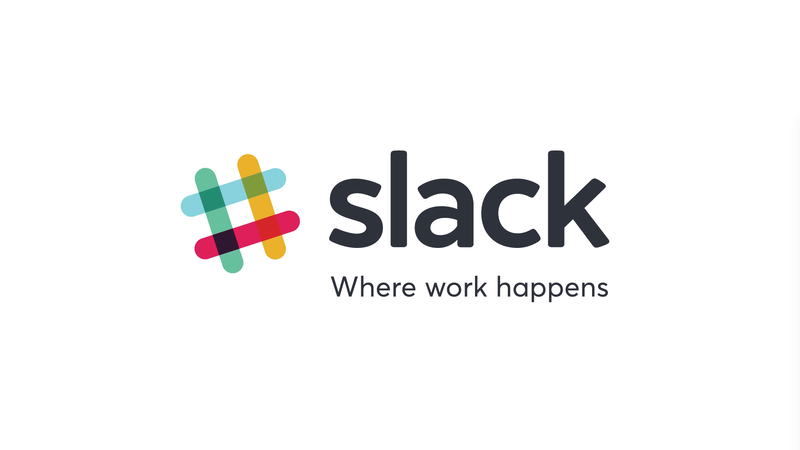
3. Content marketing
Content marketing didn’t become part of Slack’s growth strategy until 2014.
Unlike other companies, the team growing Slack made an interesting and bold choice: to host their company blog outside slack.com.
Slack’s blog is called SlackHQ.com and it was first a publication on Medium.com, the online blogging platform. It was bold and risky at the same time, and it worked out great for Slack. The content published here took full advantage of Medium’s features and was often featured on Medium’s homepage in the ‘Popular On Medium’ section.
The blog managed to acquire over 125.000 followers, but in 2018 it was moved to slack.com.
4. Twitter
We bet heavily on Twitter. Even if someone is incredibly enthusiastic about a product, literal word-of-mouth will only get to a handful of people – but if someone tweets about us, it can be seen by hundreds, even thousands.
Stewart Butterfield, CEO and founder
Twitter is Slack’s most important social media platform.
Here is how Slack used the 180-character (now 240) social media network:
- Build brand awareness;
- Define its tone of voice;
- Keep their users up-to-date on changes, improvements, company life;
- Get customer feedback;
- Communicate with customers;
- Prevent the Slack support team from scaling up massively: Slack’s customer support team is made up of just 18 people, with a group of 6 manning Twitter 24/7.
Slack’s Twitter account has 374K followers, but it is most known for being home for the Slack Wall of Love where Slack subscribers come to express their love under @SlackLoveTweets.
Read Stewart Butterfield’s success story.
5. Dear Microsoft
On November 2016, Microsoft announced it was launching their own competing product.
Slack took this opportunity to gain media attention by publishing a letter addressed to Microsoft as a full-page ad in the New York Times.
Here is the letter’s first paragraph:
Dear Microsoft,
Wow. Big news! Congratulations on today’s announcements. We’re genuinely excited to have some competition.
We realized a few years ago that the value of switching to Slack was so obvious and the advantages so overwhelming that every business would be using Slack, or “something just like it,” within the decade. It’s validating to see you’ve come around to the same way of thinking. And even though — being honest here — it’s a little scary, we know it will bring a better future forward faster.
While the letter sets out to give Microsoft “some friendly advice”, it does so by highlighting the principles and values which Slack was built upon and taking a few jabs at Microsoft at the same time:
- It’s not about features, it’s about “a degree of thoughtfulness and craftsmanship that is not common in the development of enterprise software”;
- Thousands of hours talking to customers;
- Internal transparency and a sense of shared purpose;
- The necessity of working with an open platform and integrations: “We know that playing nice with others isn’t exactly your MO, but if you can’t offer people an open platform that brings everything together into one place and makes their lives dramatically simpler, it’s just not going to work.”
- And ultimately love: “We love our work, and when we say our mission is to make people’s working lives simpler, more pleasant, and more productive, we’re not simply mouthing the words.”
Here’s the final paragraph:
So welcome, Microsoft, to the revolution. We’re glad you’re going to be helping us define this new product category. We admire many of your achievements and know you’ll be a worthy competitor. We’re sure you’re going to come up with a couple of new ideas on your own too. And we’ll be right there, ready.
— Your friends at Slack
6. Fair Billing Policy
Like many other service apps and tools, Slack uses the freemium business model: free, standard and plus subscriptions.
Out of the thousands of hours of talking to early adopters and customers, the team behind Slack found one particular paint point and came up with a solution.
What is preventing the customer on free subscription from upgrading to a paid one?
One reason is that companies are charged for a number of seats regardless of how many employees are actively using the software. A second reason is that sometimes employees become inactive so the company loses money because it paid in advance.
To this problem, Slack found the following solution: Fair Billing Policy.
Here it is:
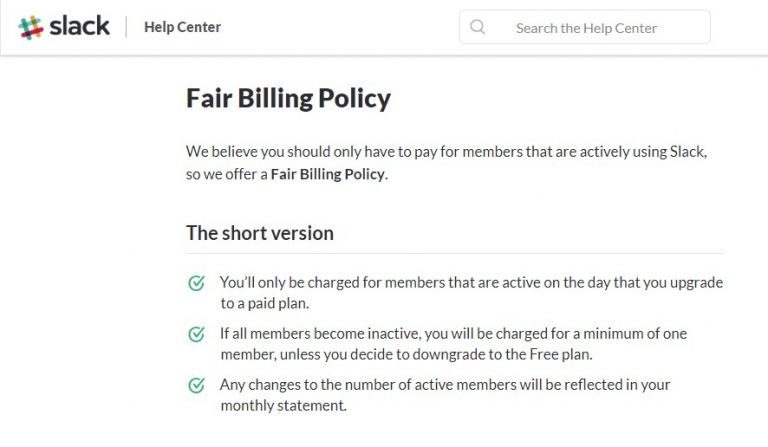
Big companies like Airbnb, IBM, Oracle, Target, BBC, Workday and E-Trade count among Slack’s customers with approximately 70,000 businesses paying for the company’s services.
According to finance experts, Slack is currently valued at $8.3B and it doesn’t look like it is slowing down.
Join the Conversation
We’d love to hear what you have to say.
Get in touch with us on Facebook Group and Twitter.